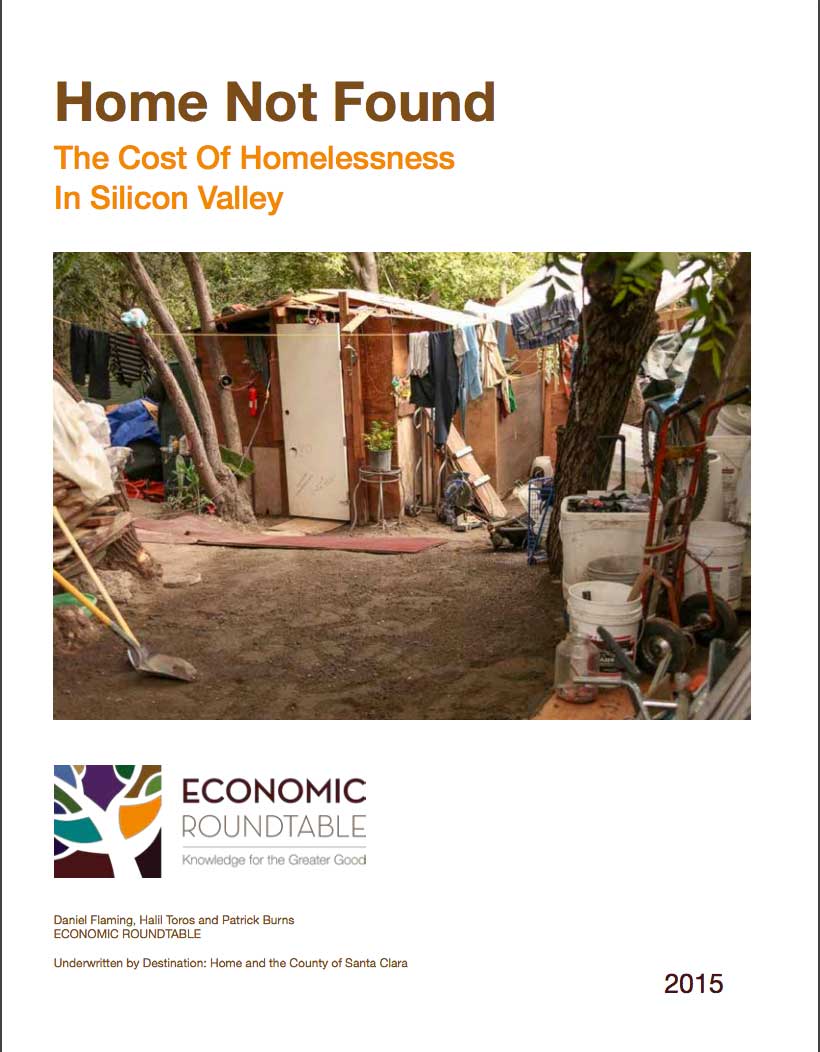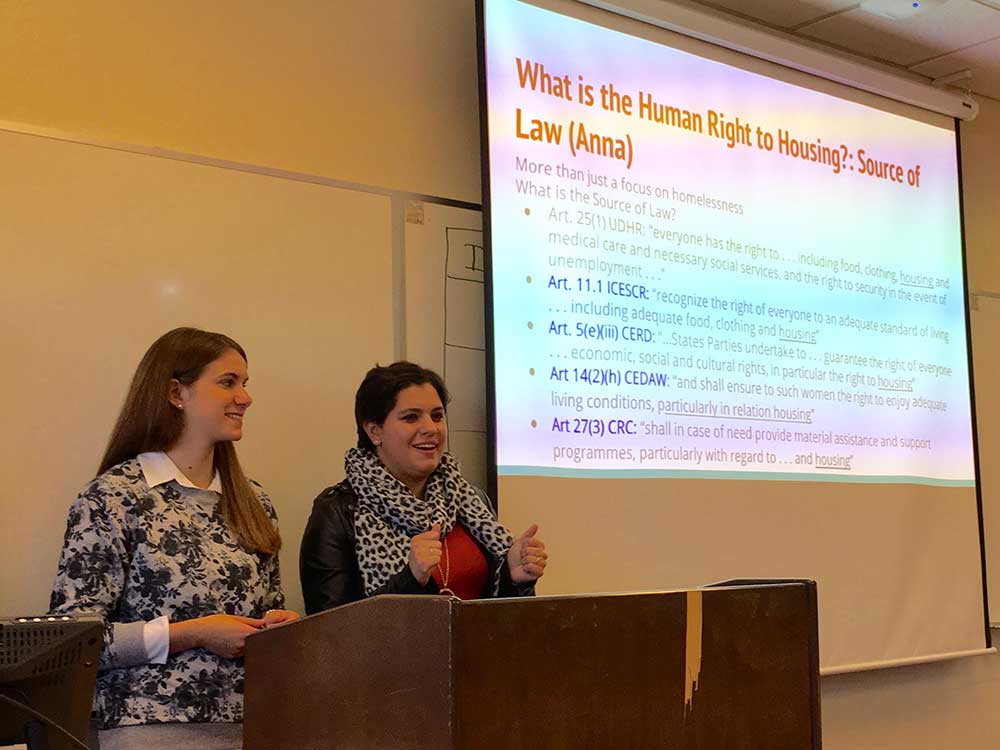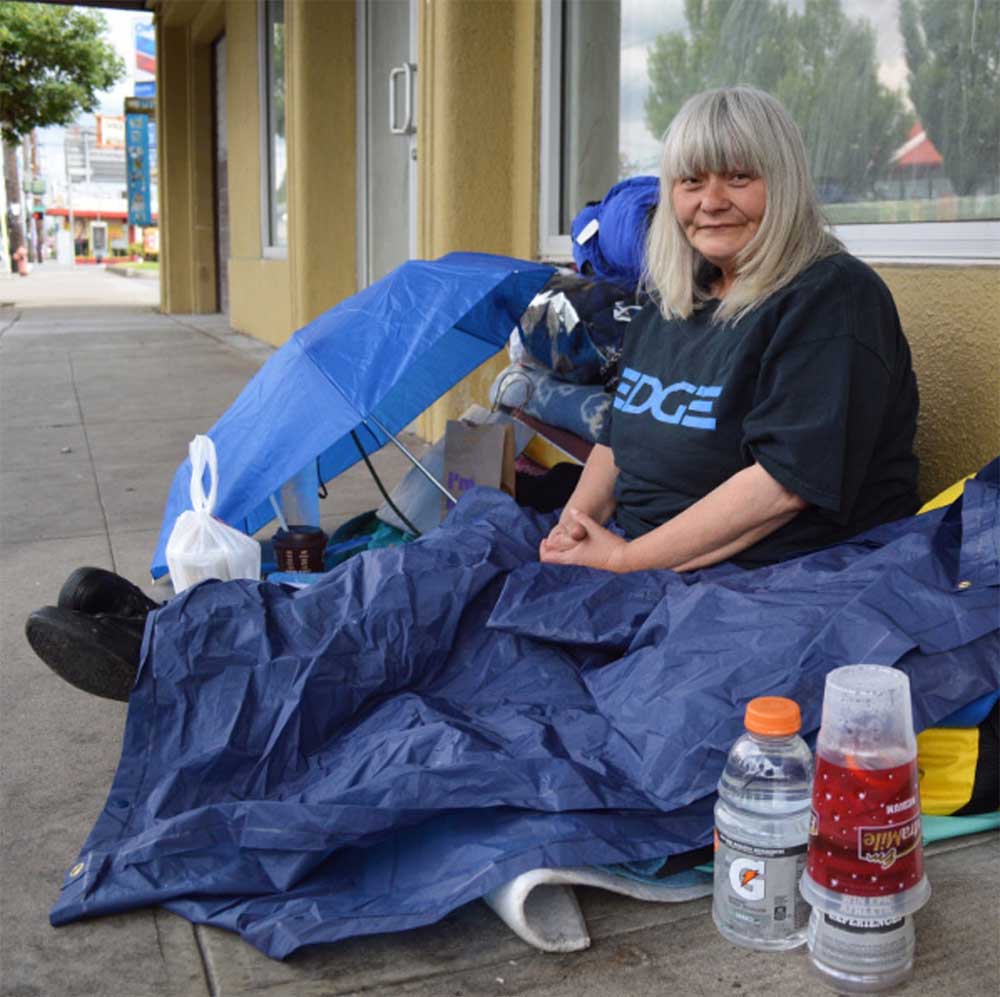by International Human Rights Clinic Student Anna Saber
In 2015, the County of Santa Clara published Home Not Found, a first of its kind report analyzing the cost of homelessness in Silicon Valley. This report, which is “the largest and most comprehensive body of information that has been assembled in the United States to understand the public cost of homelessness” includes cross-sector information of a total of 104,206 individuals – individuals who were homeless in Santa Clara County at any point during the six – year data-collecting period between 2007-2012. Yet, the report is missing one very crucial element: an examination of homelessness with a gender lens. One of the report’s findings was that the rate of persistent homelessness is higher among women than men in Santa Clara County, which is something of an anomaly when compared to national trends. But the Home Not Found report was not designed to better understand the causes for women homelessness. It was designed as a cost-analysis study. Therefore, the report suggested that the causes of homelessness for women need to be explored further. The International Human Rights Clinic (IHRC) at Santa Clara Law is assisting the county to do just that.

Home Not Found study cover
In Spring 2016, the IHRC partnered with the Office of Women’s Policy of the County of Santa Clara to conduct a study of homelessness with the specific gender and human rights perspective that has previously been missing from studies on homelessness. The goals of the study are primarily to determine the main causes of homelessness for women in the county and to evaluate how the county can better address the particular needs of this population. An additional but related objective is to provide the county with a draft ordinance to implement locally the principles of the Convention on the Elimination of all Forms of Discrimination Against Women (CEDAW) and develop a methodology that would institutionalize a gender lens in County budgeting and decision-making. Ultimately, the goal is to strengthen the county’s ability to respond to women’s needs, particularly homeless women and victims of violence against women.
During Fall 2016, the IHRC has been primarily devoted to collecting data and doing legal research for the report. To collect data on homeless women, we developed a four-pronged strategy that involves: 1) reviewing existing studies and reports on homelessness in the county; 2) interviewing local community-based service providers who have daily interactions with the target population; 3) designing, distributing, and collecting a survey instrument that will be used to receive first hand input from formerly homeless women in the county who have gone through the system and have since found more stable housing, and 4) organizing focus groups to get input from homeless women in the county who have been victims of domestic violence. We have also divided our legal research into the following two subgroups: 1) the domestic framework that focuses on addressing the needs of homeless women in the United States at large, with a particular emphasis on best practices learned from jurisdictions across the U.S., and 2) the international human rights framework that informs the human right to housing.
Clinic students Anna Saber, Anna-Maria Mayr, and Kyle Heitmann were tasked with researching the human right to housing, which finds support in several UN treaties. The human right to housing does not simply imply a roof and four walls, but rather it requires adequate housing, which is measured in terms of security of tenure, availability of services, materials, and infrastructure; affordability; accessibility; habitability; location; and cultural adequacy. The importance of incorporating the international framework in the report is not to present a treatise on international law, but rather to connect specific instances of homelessness of women in Santa Clara County to how international law addresses the issue. This includes discussing common misconceptions of the human right to housing — key to convincing those who are unwary about implementing “ending homelessness” programs — as well as describing how being homeless – a violation of the right to housing – implicates other human rights. We envision using the data collected from the survey to paint a picture of homelessness which ties in the right to housing with implications on the enjoyment of other rights, such as the right to live free from violence and the right to equal pay.

IHRC students Anna Saber and Anna-Maria Mayr discussing the human right to housing.
Clinic student Anna-Maria Mayr focused on how homelessness impacts different groups of people and on the misconceptions about homelessness. Focusing on how homelessness impacts women in particular, she reflected, “I read about the issue of security of tenure which I had never been aware of since I had never thought about the fact that leases and mortgages are often recorded or registered in the name of men and that women consequently depend on their male relatives for tenure security. Concerning common misconceptions about the human right to adequate housing, I learned that the right to adequate housing is closely linked to the right to life since experiencing dire housing conditions directly threatens the right to life. I found it surprising that whereas the right to life is recognized in the international human rights community as the supreme right from which no derogation is permitted, its applicability to the right to adequate housing has not received enough attention so far.”
The domestic research group, consisting of Clinic students Kyle Heitmann, Susan Shapiro, and Vane Echeveste were tasked with looking at the legal framework that addresses the particular needs of homeless women in the United States and Santa Clara County. For example, the research has focused on the many basic constitutional and human rights that are affected by homelessness in the United States. These include: due process rights, the right to vote, the right to personal liberty/freedom, the right to food, and the right to health care. They have also identified how other jurisdictions have come up with creative responses to homelessness in general, such as the recent New York City proposed bill that recognizes the human right to legal counsel in eviction proceedings, the recent initiatives in Newark and San Francisco and new HUD guidelines that place limits on when a landlord can inquire about a possible tenant’s criminal records, and the adoption of anti-criminalization of homelessness bills in Seattle and elsewhere. This research has also focused on alternatives that address the particular needs of homeless women through a holistic approach that is victim-centered, trauma-informed and gender-sensitive.

Housing not Handcuffs report by National Law Center on Homelessness and Poverty.
Reflecting on her research on homelessness, Clinic student Susan Shapiro found “a lot of interesting, and disheartening, information showing that cities want to get rid of homeless people rather than solve the problem of homelessness.” For instance, “many cities and counties criminalize homelessness by enforcing laws prohibiting sitting or lying down in public. Of course, these laws were only enforced against individuals who ‘looked’ homeless. Cities also have zoning laws prohibiting food banks or other organizations from distributing free meals to homeless people. These laws are justified by claiming that free food and shelter encourage people to remain homeless.” In her view “this attitude towards homelessness is a main reason why homelessness is still a persistent problem throughout the country.” Based on her research, Susan believes “that developing programs to help homeless people get back on their feet is actually more beneficial than simply trying to discourage homelessness.” She looks forward to exploring whether some of these general problems also affect homeless women in the county.
All seven of the clinic students working on the Clinic’s women and homelessness report had the opportunity to conduct interviews with service providers in Santa Clara County that facilitate different programs to addresses homelessness. We began by interviewing the following five organizations that offer services to women who have escaped domestic violence in the county: Community Solutions, Next Door Solutions, YWCA, AACI, and Maitri. In the words of Clinic student Anna-Maria Mayr, who took part in interviews with three different service providers, “we learned that temporary or emergency shelters are useful in certain instances, for example in cases of people fleeing domestic violence, but shelters are not a long-term solution to homelessness. Affordable housing is a better solution. Nevertheless, it is still important and necessary to provide temporary shelters, and the county needs to ensure that there are sufficient beds available. Currently, there seem to be only 64 shelter beds available in the county for women who are escaping domestic violence.”

YWCA domestic violence awareness campaign.
We then began to interview organizations that deal with homelessness more broadly. These were programs that ran co-ed emergency shelters, had more family-focused programs, or were large providers of rapid rehousing and permanent supportive housing programs. While transitional housing is thought to be a good model for domestic-violence focused shelters, many of these organizations that address homelessness more broadly are moving away from transitional housing and moving toward rapid rehousing models. As recounted by Anna-Maria, “the main point I learned from these interviews is that affordable housing is clearly the biggest issue in Santa Clara County. Talking to different service providers also showed that a focus on temporary housing is not the best solution because as soon as people leave these shelters, they will return to bad living situations again. Possible solutions to the tight housing market might be rental assistance in order to provide affordable housing for everyone.” As a result, she emphasized that Santa Clara County needs to “prioritize access to affordable housing.”
A third aspect of the data collection that the clinic has been working on is creating a survey instrument. This instrument will be given to the organizations that we have been interviewing who will then distribute the survey to formerly homeless women who have found more stable housing through either a rapid rehousing program or a permanent supportive housing program. This survey is a unique opportunity to receive responses from formerly homeless women, to really understand their journey through homelessness: from learning their cause(s) of homelessness, to the length of their homeless, to how they survived while homeless, to services that would have prevented them from becoming homeless, to understanding how being homeless impacted their other human rights, to learning how they finally were placed into permanent housing. The answers we get will help paint a more detailed picture of homeless women in Santa Clara County. Even more importantly, the answers we receive will inform the recommendations we provide to ensure that the solutions target the very key issues faced by this population. Over the course of the semester, the clinic students have drafted questions to be included in the survey, met with Office of Women’s Policy to ensure that the survey addresses the correct target population and data points, and revising the instrument and procedures to begin conducting the survey in January 2017. As part of our next steps, we are also considering organizing focus groups to get input from currently homeless women in the county who have been victims of domestic violence

Source: www.peoplestribune.org
Although we are still in the early stages of our research, preliminarily we have found that women often become homeless for different reasons than men do. For example, the leading cause of homelessness for women in Santa Clara County seems to be domestic violence. Further, women who are homeless have unique concerns about safety – both for themselves and their children – and about personal hygiene, to name a few, that homeless men do not endure in the same way.
Overall, this has been a unique opportunity that has exposed the Clinic’s student to real world experiences and an opportunity to develop practical skills. We have finessed our research skills – both in international law and domestic law; we have practiced interviewing skills – where we were the ones drafting interview questions and conducting the interviews; we have had exposure to working in partnership with a governmental entity through our meetings with the Office of Women’s Policy, and we all gained this vast knowledge in the subject of homelessness. Anna-Maria reflects on her experience and describes how it added to her semester at Santa Clara as an exchange student from Germany enrolled in the LLM program, “by taking part in this project, I had the opportunity to learn a lot more about homelessness, both in the United States and also internationally. For me personally, taking part in these interviews and doing research on the international aspect of homelessness has helped me a lot to improve my written and spoken English and it also provided me with an opportunity to practice my public speaking skills.”
Clinic Student Anna Saber, who has grown up in Santa Clara County, also found the project very rewarding, especially because of her personal connection to the community, “aside from my undergrad years, I have lived in Santa Clara County my entire life. Thus, this project was a very unique experience for me. Going to a Catholic high school, I completed many community service hours at the local homeless shelters, lending my time to the various food pantry programs. During my time volunteering, I always wanted to do more to help the homeless population in my community. This became especially true when taking the train; I saw the many homeless individuals living in tents near the railroad tracks. Being able to interact with these local organizations and contribute to a report that will present meaningful solutions to reducing homelessness in Santa Clara, is very profound.”
We will continue to provide updates on our work through this blog.